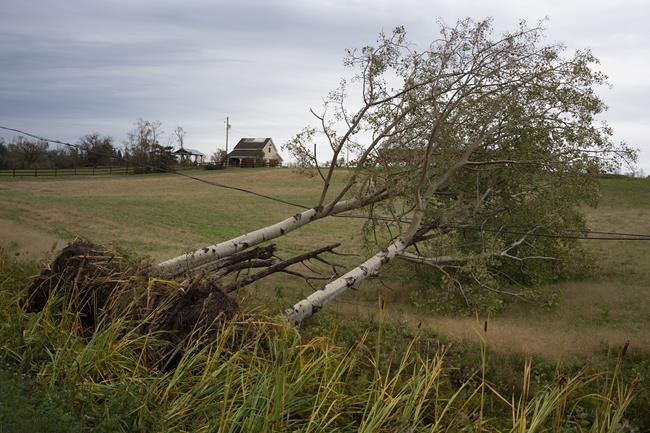HALIFAX — After post-tropical storm Fiona exposed a blind spot in Nova Scotia's emergency response system, advocates who started pushing for a provincewide registry of vulnerable persons can point to a program in the Annapolis Valley as a model.
The Kings County Regional Emergency Management Organization has had a voluntary registry in place since September 2019 and is trying to get more people to sign up.
Dan Stovel, the regional emergency management co-ordinator, said the system serves the incorporated towns of Wolfville, Kentville and Berwick and the greater municipality of Kings County, which have a total population of more than 60,000 people.
”Our system is basically designed for those individuals who are living at home without 24-hour support,” Stovel said. The database, he added, was developed with the help of Ontario’s Sault Ste. Marie Innovation Centre.
The Kings County system allows first responders to know certain elements of the medical histories of vulnerable people on the registry before they arrive at the scene of an emergency. The system can generate reports for first responders, such as members of the region’s 13 fire departments, and advise them of issues related to mobility, vision and hearing, involving people living at specific addresses, Stovel said.
Stovel said the registry is especially useful at a time when many older people are living at home alone instead of in long-term care facilities. He added that people can voluntarily register online or can pick up registration forms at municipal offices.
Despite its advantages, Stovel said more outreach work needs to be done to get people to sign up — only 21 people have so far registered.
Gerry Post, the former executive director of Nova Scotia's accessibility directorate, was among those who advocated for a provincewide system during a hearing last month before a legislature committee considering amendments to proposed 911 legislation. The committee heard that widespread damage and power outages caused by Fiona in late September exposed a blind spot in the province's emergency response system: first responders were delayed in reaching some vulnerable people with disabilities.
Post said he wonders why legislation is even needed at this point. “When you look at what they’ve done in Kings County, there really is no need for legislation,” Post said. “We’ve got the model.”
However, Post said there should be provincial oversight in order to help smaller municipalities and regions that may not have the technical capacity to mount their own systems. “It has to be implemented at the local level, but I think there needs to be a provincial framework so there is some consistency between the regions."
The government has said it’s considering the idea of a provincial registry, but it won’t commit to one without further study.
“We haven’t said yes or no,” John Lohr, minister responsible for emergency management, told the legislature on Nov. 1. “We just can’t say yes without knowing who’s doing it, what’s involved, what’s the cost and how it’s maintained.”
In an emailed response Monday, Heather Fairbairn, spokeswoman for the Emergency Management Office, made note of the Kings County program and said that municipalities are responsible for having their own emergency management plans. Fairbairn said the management office is reviewing its emergency response performance and is looking at what other jurisdictions are doing.
“Creating and maintaining a provincewide (vulnerability) list could involve privacy issues and require frequent updates,” she said. “Any such list would have to be voluntary.”
This report by The Canadian Press was first published Nov. 14, 2022.
Keith Doucette, The Canadian Press
Note to readers: This is a corrected story. A previous version said there were 15 fire departments in the region.



